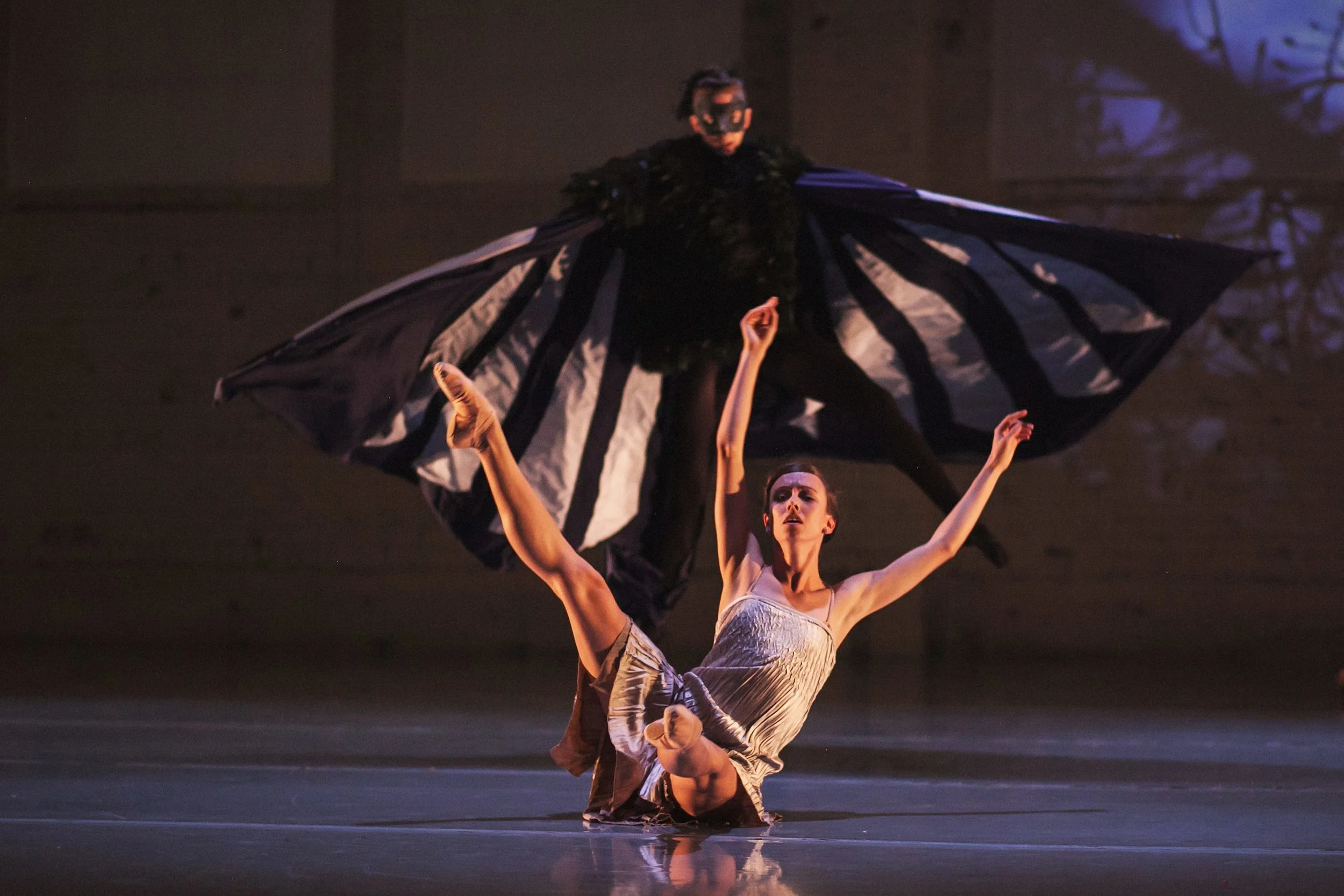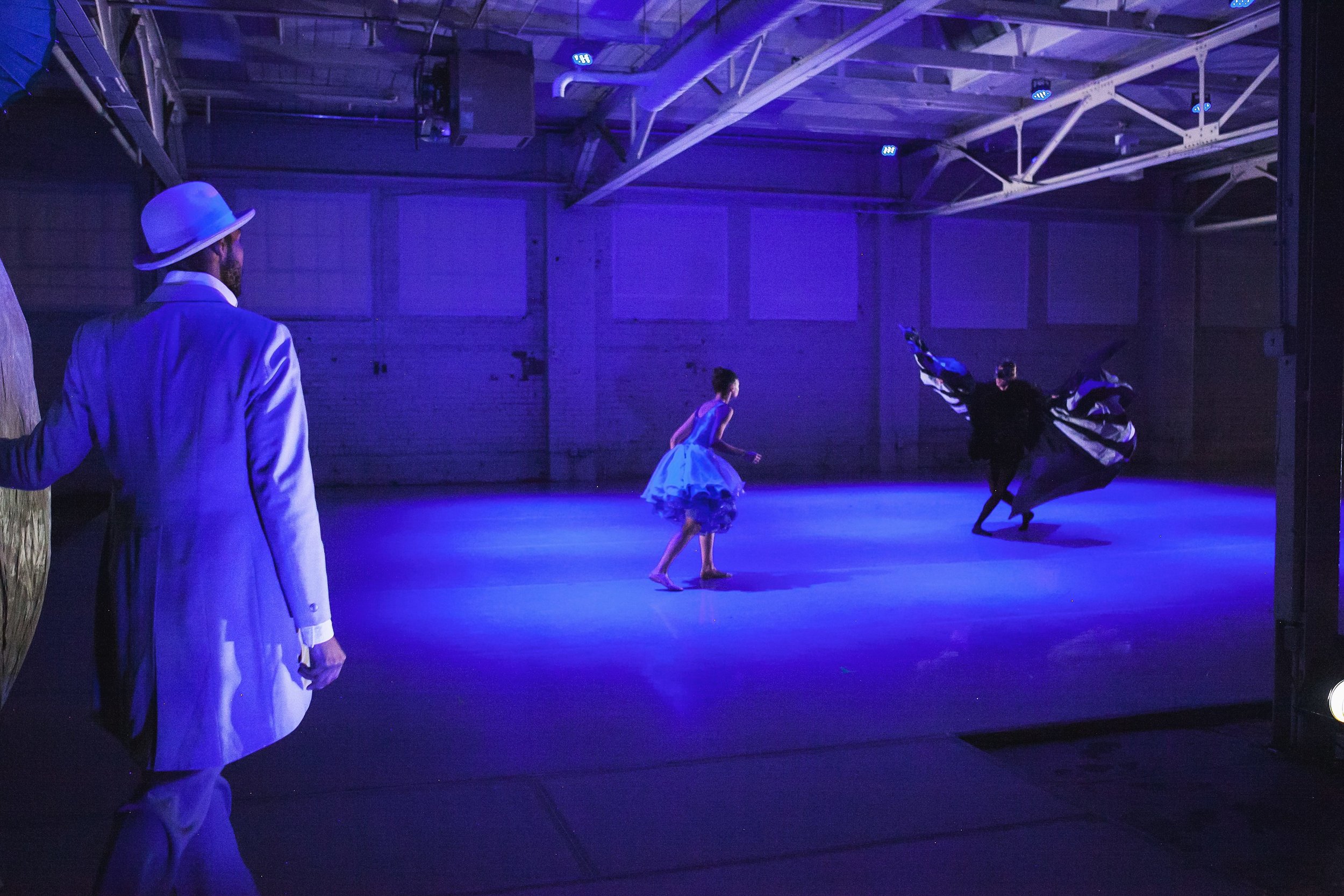Snow: A Dark Tale, Part 1
The Tale of the Magpie
“Among the beautiful clouds,
Over the heavenly river,
Crosses the weaving maiden.
A night of rendezvous,
Across the autumn sky.
Surpasses joy on earth.
Moments of tender love and dream,
So sad to leave the magpie bridge.
Eternal love between us two,
Shall withstand the time apart. ”
It is unlucky to see a lone magpie, but bad luck can be warded off with this simple rhyme:
One for sorrow
Two for mirth
Three for a wedding
Four for a birth
Five for silver
Six for gold
Seven for a secret, never to be told
Eight for a wish
Nine for a kiss
Ten for a surprise that is not to be missed
Eleven for health
Twelve for wealth
Thirteen, beware, it’s the devil himself!
A dark curse has descended on the Wonderbound studio this December and only Fenris of Jotunheim knows how to break it. Snow, the second installment of a three-part winter folktale conceptualized and choreographed by Wonderbound's Artistic Director, Garrett Ammon, follows the exploits of a wolf trapped in human form as he tries to free a woman who has been similarly enchanted. Steeped in stories spanning centuries and continents, Garrett Ammon’s Snow weds, quite literally, characters from Norse myths and European folk tales.
The series began in 2014 with the multi-sensory production, Winter. The concept of the work was born from Ammon’s fascination with the winter season, and flourished in the symbol of the magpie. Winter told the story of a husband, Thomas, and his loving wife, Elizabeth, whose blissful marriage is interrupted by a Magpie who appears at their window and steals the wife away. The work follows Thomas’ quest through the winter elements to find her and concludes with the Magpie taking the place as Thomas’ wife, leaving the real Elizabeth trapped as a magpie herself.
The wiley magpie is drenched in folklore and superstition across the world’s cultures. The magpie’s high level of intelligence, as well as their affinity for shiny objects, has earned them the reputation of cunning thieves and even mischief-making fairies. Because magpies mate for life, a lone magpie is seen as a sign of bad luck in old English tradition, as its solitude implies the death of its mate. Scottish folklore rumors that each magpie carries a drop of the devil’s blood under its tongue, and Norse mythology believes magpies to be sorcerers flying to an unholy gathering.
However, in some cultures, a magpie’s intelligence is more to its credit than in other cultures. A 2600 year-old Chinese folktale tells of two forbidden lovers banished to opposite sides of the Milky Way—except once a year when a bridge of magpies reunites them for one day. In the town of Poitou, France, a bunch of heather and laurel hung from a high tree to honor the magpie, whose loud chatter warns of an approaching wolf.
With all the conflicting myths heralding this pied corvid, the magpie becomes for Snow a nuanced and morally ambiguous character. Is the cursed magpie the harbinger of misfortune in the world of Snow, or a victim of dark magic herself?





